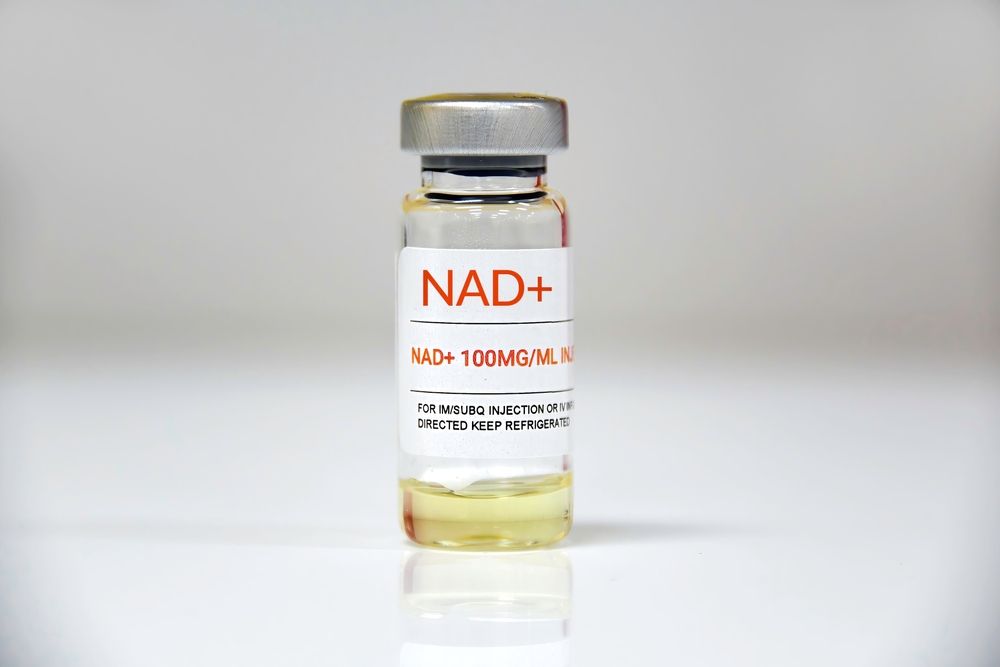How NAD+ IV Therapy Improves Cellular Repair and Recovery

NAD+ IV Therapy has gained attention in recent years as a revolutionary approach to enhancing cellular health and promoting recovery. By infusing this critical coenzyme directly into the bloodstream, individuals can potentially unlock numerous benefits related to cellular repair and recovery. In this article, we will explore various aspects of NAD+ IV Therapy, including its biological importance, the process of therapy, its benefits, potential risks, and future research directions.
Understanding the Role of NAD+ in the Body
The Biological Importance of NAD+
NAD+ (Nicotinamide Adenine Dinucleotide) is a coenzyme found in every living cell. It plays a fundamental role in various biological processes, including energy production, metabolism, and DNA repair. By facilitating redox reactions, NAD+ is essential for converting food into usable energy within the mitochondria. This process is vital for sustaining cellular functions and overall health.
Moreover, NAD+ is crucial for maintaining cellular integrity. It acts as a substrate for enzymes involved in repairing damaged DNA, which is particularly important as our cells face constant stress from environmental factors, oxidative damage, and even the natural aging process. As levels of NAD+ decline with age, these critical biological functions may become impaired, leading to various health issues.
NAD+ and Cellular Function
The relationship between NAD+ and cellular functions extends beyond just energy production. NAD+ is involved in signaling pathways that help regulate cell growth, apoptosis (programmed cell death), and cellular stress responses. In essence, it serves as a regulatory molecule that helps maintain cellular homeostasis.
As research progresses, scientists are discovering the potential of NAD+ in influencing longevity and promoting healthy aging. By ensuring adequate levels of this coenzyme, cells can operate more efficiently, recover from damage faster, and maintain their overall functionality.
The Science Behind NAD+ IV Therapy
The Process of NAD+ IV Therapy
NAD+ IV Therapy involves administering nicotinamide adenine dinucleotide directly into the bloodstream through an intravenous infusion. This method bypasses the digestive tract, allowing for immediate bioavailability. The therapy typically lasts several hours and is conducted in a clinical setting, where healthcare professionals monitor the process to ensure safety and efficacy.
During the therapy, the body absorbs NAD+ more effectively than through oral supplementation. Patients may experience a gradual increase in energy levels and an overall sense of wellness as NAD+ circulates throughout the body, reaching vital organs and tissues.
How NAD+ IV Therapy Aids Cellular Repair
One of the key advantages of NAD+ IV Therapy is its role in enhancing cellular repair mechanisms. When administered, NAD+ can stimulate enzymes that promote DNA repair, protect against oxidative stress, and enhance cellular metabolism. This can lead to improved recovery from physical exertion, injury, or illness.
Research indicates that individuals receiving NAD+ IV Therapy often report reduced muscle soreness, faster recovery from workouts, and enhanced performance. As cells can repair more efficiently, individuals may experience increased strength and endurance over time.
Benefits of NAD+ IV Therapy for Recovery
Accelerating Recovery with NAD+ IV Therapy
NAD+ IV Therapy offers significant advantages for those looking to accelerate their recovery process, particularly athletes and individuals recovering from surgery or illness. The infusion of NAD+ may lead to:
- Reduced muscle fatigue and soreness.
- Improved exercise performance and endurance.
- Faster healing of tissues and injuries.
- Enhanced cognitive function and clarity.
Many users report feeling more revitalized, with increased energy levels and motivation to engage in physical activities. As cellular functions improve, individuals may find themselves recovering more swiftly and effectively from both physical and mental fatigue.
Long-Term Effects of NAD+ IV Therapy on Recovery
While many people pursue NAD+ IV Therapy for immediate benefits, ongoing studies suggest potential long-term effects that could contribute to sustained health and recovery. Some observed benefits include:
- Increased resilience to physical stressors.
- Higher overall levels of energy and stamina.
- Improved cellular health that may influence longevity.
- Enhanced quality of life and well-being.
These long-term outcomes make NAD+ IV Therapy an attractive option for individuals committed to improving their recovery and overall health as part of a holistic wellness plan.
Potential Side Effects and Risks of NAD+ IV Therapy
Common Side Effects of NAD+ IV Therapy
As with any medical treatment, NAD+ IV Therapy may present some side effects. Most individuals tolerate the therapy well, but common side effects can include:
- Headaches
- Dizziness
- Nausea
- Fatigue
These effects are typically mild and short-lived. Patients are advised to communicate with a healthcare provider regarding any concerning symptoms during or after the infusion.
Understanding the Risks of NAD+ IV Therapy
While NAD+ IV Therapy is considered safe for many individuals, it is essential to recognize that not everyone may be a suitable candidate. Potential risks include:
- Allergic reactions to the infusion.
- Imbalances in electrolytes if not monitored during therapy.
- Potential complications for individuals with specific medical conditions.
Before undergoing treatment, a thorough consultation with a medical professional is crucial for evaluating individual health status and discussing any underlying concerns.
The Future of NAD+ IV Therapy
Ongoing Research in NAD+ IV Therapy
The field of NAD+ research is expanding rapidly. Scientists are actively exploring the therapeutic potential of NAD+ in various areas, including neurological disorders, metabolic diseases, and age-related conditions. Preliminary studies suggest that NAD+ might play a role in combating diseases like Alzheimer’s and Parkinson’s, making further research invaluable.
Potential New Applications of NAD+ IV Therapy
As understanding of NAD+ continues to evolve, the applications of NAD+ IV Therapy may broaden significantly. Future research could unveil:
- New treatment protocols for chronic fatigue syndrome.
- Strategies for enhancing mental clarity and focus in cognitive decline.
- Innovative approaches for managing metabolic conditions like diabetes.
As scientists unravel the complexities of NAD+, NAD+ IV Therapy holds the promise for not only enhanced recovery but also improved health outcomes across a spectrum of conditions.
In conclusion,
NAD+ IV Therapy represents a progressive advancement in the realm of cellular repair and recovery. Its role in optimizing cellular function is remarkable, paving the way for a healthier, more resilient future.










